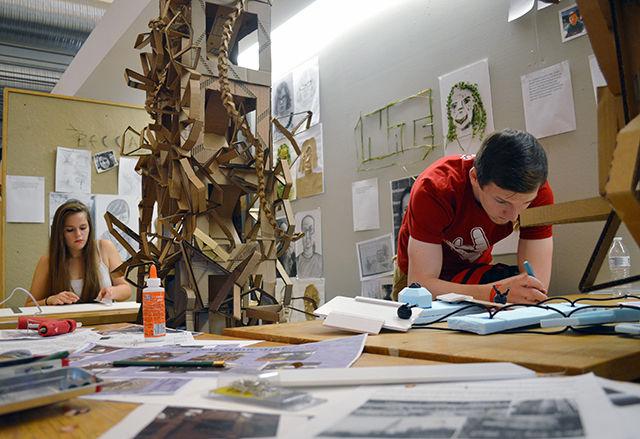The College of Design redistributed approximately $122,000 this fall, which changed the funding of several studio classes, programs such as Art2Wear and technology for the design faculty.
The college will be closing its downtown studio in order to save money on rent, as well as cutting all state funding to Art2Wear and Fish Market. The programs will now need to receive funding from private sources.
The budget cuts were necessary in order to keep the high-quality faculty members. The redistributed funds will go toward increasing faculty salaries, according to Marvin Malecha, the dean of the College of Design.
“The only way I’m going to keep the new faculty is by paying them more,” Malecha said. “They are really underpaid.”
The budget cuts have affected several areas of the College of Design, including classes in the First Year Experience coursework that all undergraduate design students take. The studio component of the First Year Experience will now be funded by the Dean’s Office for only one semester instead of two.
The individual design programs will now be responsible for funding studio costs of the second semester.
“I don’t think it will be a huge problem,” said Virginia Li, a freshman in industrial design. “But some of the older students didn’t react as positively. They thought that having contact with people outside their department was really beneficial in the first year.”
Malecha said he and the department heads will meet sometime this week to finalize the cuts to next semester’s schedule. Final adjustments may still have to be made to the schedule.
“I haven’t seen the exact numbers,” Malecha said. “It is likely that we are going to see fewer sections of courses, and professional electives may start being offered every other year.”
Until next semester’s schedule is updated, the impact that the budget cuts will have on the students is uncertain.
“Everything really just depends on how the cuts actually affect the students,” Li said.
The college will also undergo administrative reorganization. The college is considering moving from two associate deans to one. The coordination of the graduate program may change as well: $13,000 or $14,000 of its budget needs to be redistributed, which could cause fewer teaching and resident assistant positions available for Ph. D. students, according to Malecha.
“We have pushed our departments to do more sponsored work for private sources in order to raise money,” Malecha said.
The College of Design has also had to cut approximately $40,000 from its funds for faculty technology such as personal computers rather than teaching technologies for the classroom. This may put the design faculty behind the professional standard.
“The standard for new equipment in the professional design offices is a three-year rotation,” Malecha said. “If you are at anything less than a three-year rotation, you are falling behind the offices.”
To combat this, the College of Design is considering imposing a hand-down system in which higher-tech faculty would receive updated technology, allowing them to pass down their old technology to faculty with less need for high-tech equipment.
“It will have to be a priority for next year’s budget,” Malecha said.
Although the budget cuts will have an impact on design classes, Malecha said the cuts were made to best accommodate the students.
“The best thing I can do for a young design student is to put them in a class with a great teacher,” Malecha said. “Everything else comes secondary.”








